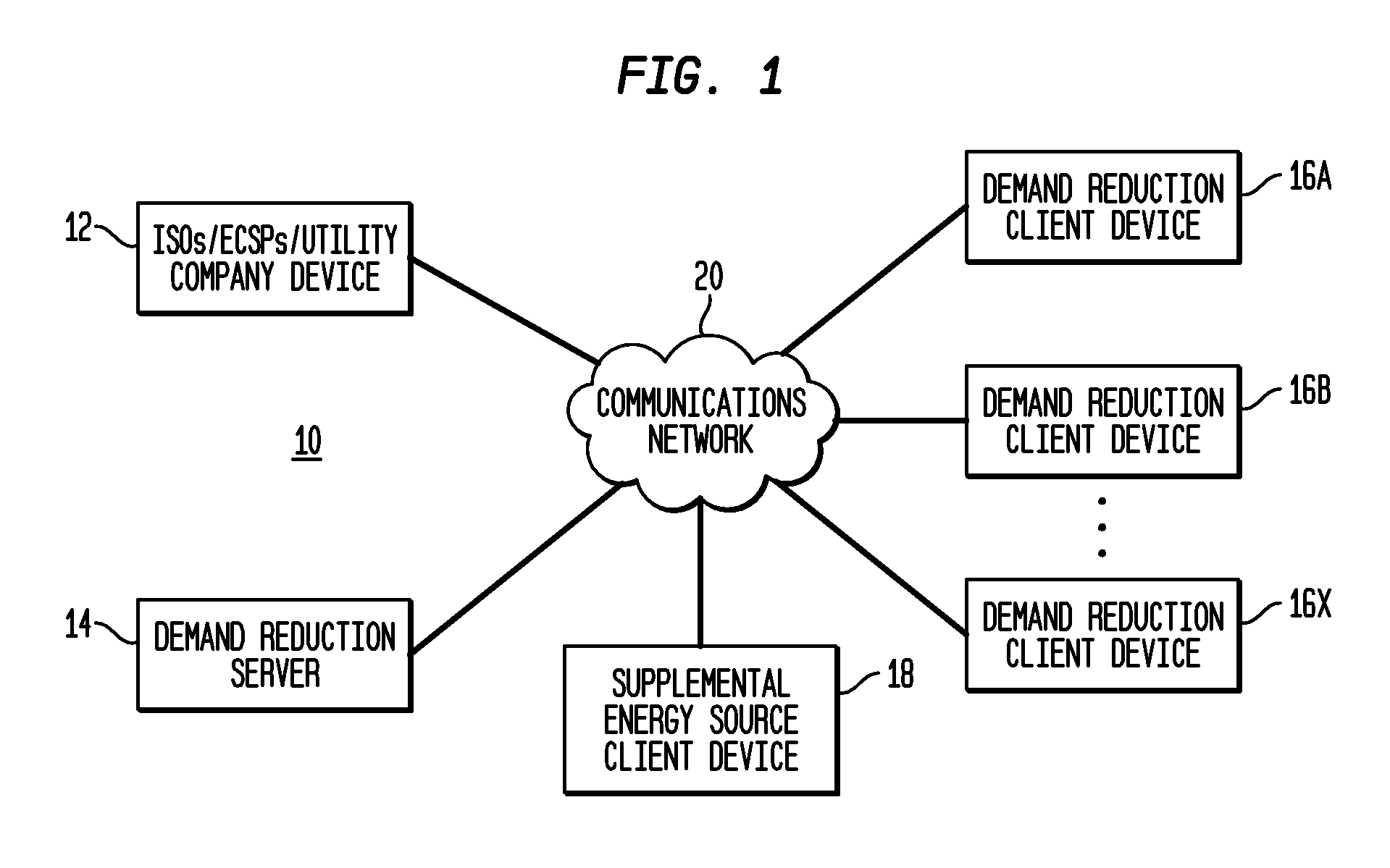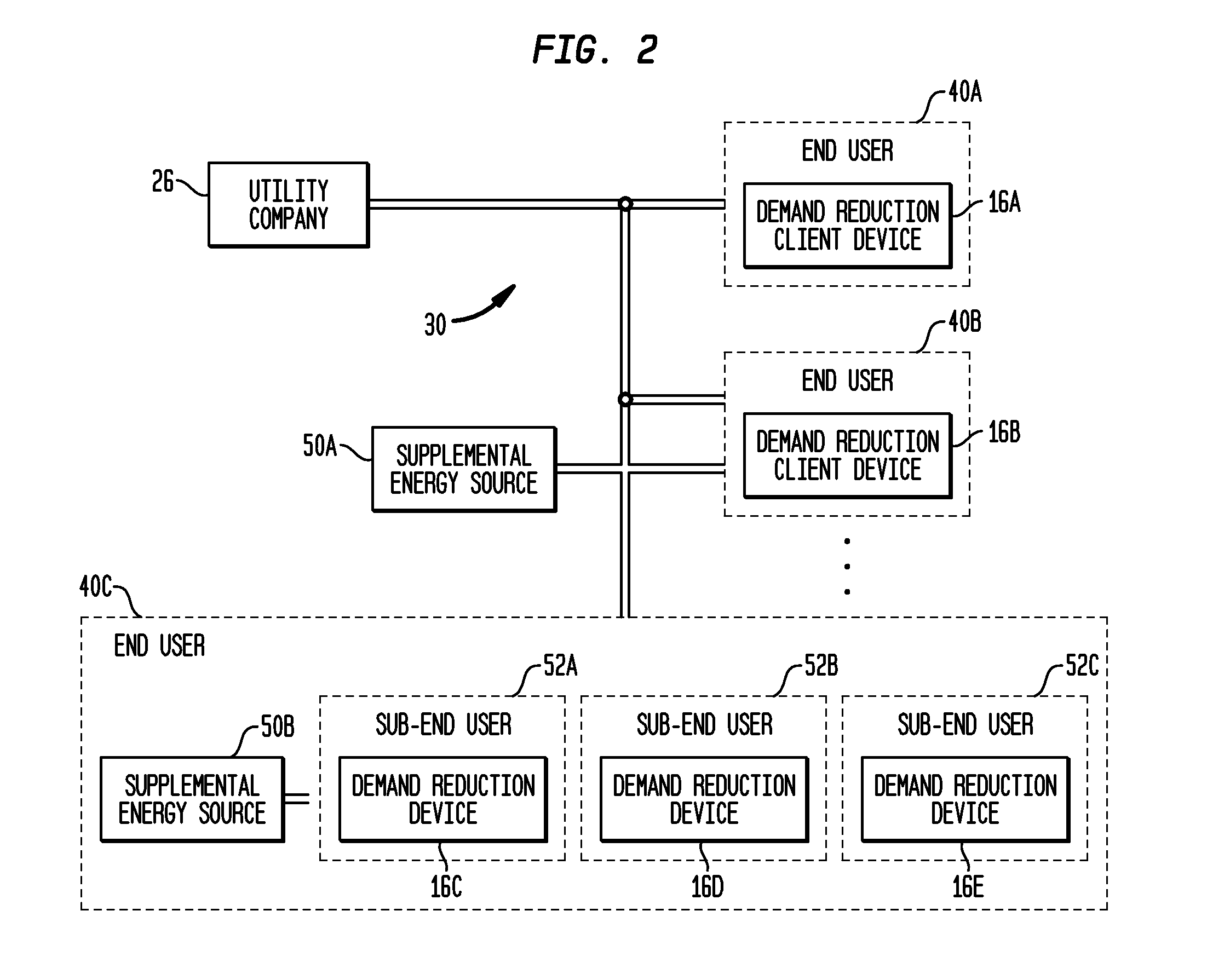The current technique of end users reducing KW demand pursuant to such DR Agreements, however, depends too much upon human involvement to implement actions to achieve the agreed upon demand reduction for the DR event at the end users.
There are inherent weaknesses in the current technique, because the implementation of demand reduction for a DR event depends on a human responding to an email, fax or
telephone call from an ISO, utility and / or ECSPs that provides notification of a request for demand reduction at the
end user for a DR event.
1) Humans do not necessarily sit by their computers waiting for “that email” to show up, or by their fax machines waiting for “that fax” to show up. By the time a human sees and reads “that email” or “that fax,” there may be little or no time to implement a response at an
end user, as required for the DR event under a DR Agreement. In addition, in current office environments humans use fax machines much less than emails, which further decreases the chance of a timely response for a faxed request for demand reduction for a DR event.
2) During a DR event, certain geographic areas may already be experiencing brownouts and / or black outs, such that computers and fax machines at end users may already be inoperative when a request notification is transmitted by email or
facsimile. Consequently, the human (operator) responsible to implementing demand reduction at the
end user to comply with the DR Agreement never receives “that call” or “that fax.”
3) Humans do not necessarily sit by their office telephones waiting for “that phone call” to come. By the time they return to their
desk and listen to their voice mails, there may be little or no time to respond.
4) Humans do not necessarily carry their
cell phones and / or PDAs with them at all times or, if they do, the devices may be on “vibrate.” Consequently, when the request notification for energy curtailment is made, either via phone call or email, this request may be missed. In addition, by the time humans pick up their
cell phone and / or PDA and listen to their voice mails or look at their emails, there may be little or no time to respond. Further, it is very common that
cell phone and / or PDA coverage is bad in certain areas, such that humans may never get “that call” or “that email.” In addition, it is very common that cell phone and / or PDA batteries are low or dead, such that humans may never receive “that call” or “that email” until the batteries of such devices are recharged. By such time, the end user may have missed the time period in which a response to the DR event is required under the DR Agreement.
5) Humans go on vacations, get sick, are called out on emergencies, get into accidents, fall asleep, get distracted, have higher priorities, can only accomplish so many tasks at one time, etc. All these possibilities may prevent a call for energy curtailment from being acted upon in a timely manner.
6) Humans also make mistakes. Therefore, even if a call for energy curtailment is received, appropriate action by the recipient may not be timely implemented at the end user, such that the time period in which a response to the DR event is required under the DR Agreement may have been missed.
7) Humans do not have the ability to make complex mathematical calculations with a high degree of accuracy at all hours of the day. Consequently, it is highly likely that humans will not always make the proper decisions with respect to what actions to take and / or KW demand control actions to implement, and the order in which such actions are to be implemented, based upon a multitude of criteria that needs to be evaluated simultaneously and substantially instantaneously.
Thus, based on the typical human involvement in a response to a request for energy curtailment, DR events requiring implementation of demand reduction within a short period of time are not necessarily appropriately and timely responded to by end users.
A “day ahead” event may arise, for example, if in the opinion of the ISO, there might be a concern of a “brown out” or “
black out” the very next day and / or the demand for
electricity might place the ISO and / or
utility company(s) at an economic
disadvantage.
These efforts are stressful, and the larger the physical size of the end user, the more difficult it is for the operator to perform such actions.
For example, an end
user facility may be so large that provisions of a DR Agreement for a DR event cannot be satisfied unless a very sophisticated
building automation system(s) is already in place at the end user with demand reduction strategies already preprogrammed.
Even in these circumstances, however, the operator at the facility still would have to manually activate this demand
response system.
In addition, the “day of” event may arise because the ISO and / or
utility company(s) are attempting to counteract a potential economic
disadvantage of high demand and low supply with respect to their purchase of power from electrical power producers.
Although the monetary compensation that end users may receive for complying with a request for demand reduction for a “day of” DR event usually exceeds that associated with complying with a “day ahead” DR event, an end user usually has great difficulty in complying with demand reduction requirements of a “day of” DR event.
Consequently, most end users cannot comply with requirements of such DR event and do not include such a DR event in the DR Agreement.
In addition, although an end user having a very sophisticated
building automation system(s) already in place with demand reduction strategies already preprogrammed may include such DR events in a DR Agreement, there are few of such end users and, those that do exist who attempt to manually activate such systems to reduce demand, more often than not are not able to respond quickly enough to provide for compliance with a “day of” DR event and, thus, fail, either partially or completely.
This human involvement in monitoring does not permit a person (energy manager) at an end user, who is responsible for management of energy usage and
demand load reduction activities, to have real
time information on electric KW demand usage for the end user.
In addition, although so called smart electrical
power usage meters are known, such meters typically do not provide real time electric KW demand usage information to an end user or, for example, an ECSP with whom the end user has entered into a DR Agreement.
Also, the necessary involvement of humans (operators) to manually take actions to reduce demand loads makes it very difficult, if not impossible, for an end user to take
advantage of
real time pricing of electrical power.
As the actions that need to be taken to reduce KW demand at the end user are manually implemented, it is difficult for the end user to reduce KW demand accordingly, such as in large or small amounts as needed, in real time, depending upon the real time electrical rate, in comparison to a threshold electrical rate above which the end user does not desire to pay for electrical power.
Further, some ISOs may desire, but typically are not able, to reduce significant end user loads directly from their operations, for example, to compensate for frequency modulations in the
power grid distribution system.
The typical technique of a human (operator) at an end user manually taking actions to reduce
demand load does not permit for such direct demand reduction actions by the ISOs.
Typical residential homes, however, can reduce KW demand only by about 1-2 KW, and also many smaller commercial entities, such as standalone stores or factories, cannot reduce KW demand sufficiently to meet the requirements for becoming an end user party to a DR Agreement.
These efforts by utilities have met with some success, although the nominal financial incentives, such as $10 or so, that utilities may offer the homeowner for the entire cooling season does not provide much of an inducement for the homeowners to participate.
Homeowners, however, can
opt out of DR events and / or not participate fully, such that, even though their initial intentions are admirable, the desired KW demand reduction sought is not achieved during a DR event.
Moreover, energy curtailment techniques have little concern for, and hence typically do not consider, human factors, such comfort or convenience.
Although a homeowner initially may desire to maximize KW demand reduction, the discomfort associated with doing so, for example, the existence of higher temperatures in homes during DR events, the need to schedule use of
electrical devices such as electric ovens around DR events, etc., ultimately proves intolerable, thereby causing many homeowners to abandon their demand reduction goals.
Further, as discussed above, humans do not necessarily sit by their “smart thermostats” waiting for a DR event notification.
 Login to View More
Login to View More  Login to View More
Login to View More 


